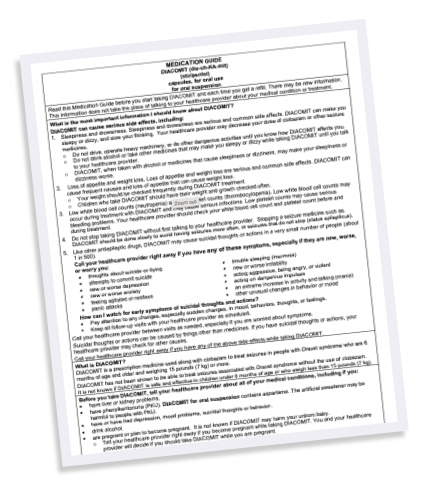Managing Side Effects
When starting any new medication, it is important to tell your child’s doctor about any side effects your child experiences. The most common side effects for patients treated with DIACOMIT are sleepiness, decreased appetite, decreased weight, agitation, impaired coordination, decreased muscle tone, nausea, tremor, slurred speech, and trouble sleeping.1
The good news is that most side effects can be managed, and a few even reversed, through dose adjustments of certain other medications. Your child’s doctor may need to modify your child’s treatment plan and ask you to monitor for improvements.
These are not all the risks for use of DIACOMIT. Please see the Important Safety Information and full Prescribing Information. To report suspected adverse reactions, contact Biocodex at 866-330-3050 or the Food and Drug Administration at 800-FDA-1088 or www.fda.gov/medwatch.



